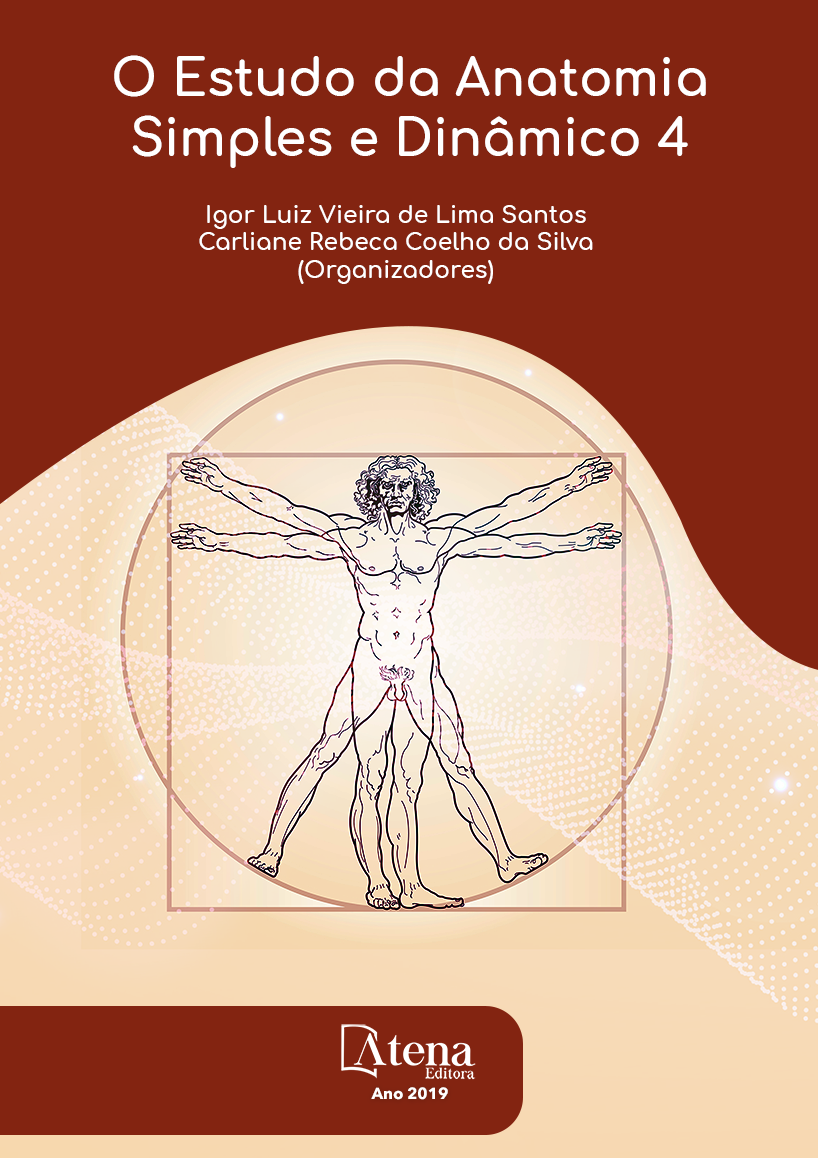
LESÕES DO MANGUITO ROTADOR EM JOGADORES DE TÊNIS: UMA LIÇÃO DE ANATOMIA
Introdução: O ombro é uma articulação
complexa, com uma ampla variedade de
movimentos e demandas funcionais. As lesões
que atingem o membro superior em atletas
são freqüentes, sendo no caso do Brasil, três
esportes apresentam destaque em termos de
números de lesões acometidas: tênis, voleibol e
handebol. Uma vez que esses esportes exigem
uma alta atividade biomecânica (as articulações
citadas anteriormente são muito utilizadas e
no saque, por exemplo, pode se realizar uma
rotação angular em 7000 graus por segundo
na aceleração), além de ser necessário um
conhecimento da anatomia supracitada para um
melhor tratamento da região por um ortopedista
(SILVA, 2010). Objetivo: Realizar revisão sobre
os músculos do manguito rotador e anatomia
envolvida, relacionando à prática de tênis e
caracterizando lesões associadas. Metodologia:
Revisão de literatura realizada a partir de livros
referência em anatomia como Moore e Netter e
artigos de revistas renomadas encontrados nas
bases de dados: SCIELO, LILACS, e PUBMED.
Serão incluídos artigos a partir de 2000 até
2018, sendo excluídos aqueles cujo foco não
seja dado na anatomia do manguito rotador
ou lesões provocadas pela prática de tênis.
Descritores empregados: “epidemiologia lesões
relacionadas ao tênis”, “manguito rotador” e
“lesão manguito rotador e prática de tênis”;
tendo todos sido utilizados tanto em português
quanto em espanhol e inglês. Resultados: A
articulação do ombro é a articulação menos
congruente do corpo humano, assim envolve
uma ampla amplitude de movimentos nas
atividades diárias. Esses movimentos resultam
de uma complexa interação entre as estruturas
ósseas (escápula, cabeça do úmero e clavícula) e tecidos moles adjacentes, envolvendo
cápsula do ombro, ligamentos estabilizadores e músculos (BÄCKER,2018). A extensa
amplitude de movimento permite ao atleta a capacidade de participar de uma série
de atividades esportivas, porém não é isenta de riscos. Se algum dos estabilizadores
estáticos ou dinâmicos são atingidos por trauma ou uso excessivo, o ombro tem maior
risco de lesão.Em atletlas, 8 a 20% das lesões são no ombro (TERRY,2000). As lesões
que acometem os músculos do manguito rotador podem se tornar complicada em
tenistas, principalmente profissionais ou amadores regulares. A cirurgia do reparo
do tendão do manguito obteve bons resultados, sendo realizada pela via aberta ou
artroscopica. Independente da via utilizada, o sucesso depende de sua realização
bem feita (VIEIRA, 2015). Conclusão: Conclui-se que a importância do conhecimento
da anatomia e cinesiologia do corpo, a fim de entender a origem das lesões que
acometem os membros superiores. Tendo destaque para as lesões que ocorrem no
manguito rotador, devido a sua alta incidência. As principais lesões do tenista são por
redução da função dos rotadores internos. Levando em conta outros fatores, como
idade, sexo, tempo de prática, recorrência de lesões e grau de atividade.
LESÕES DO MANGUITO ROTADOR EM JOGADORES DE TÊNIS: UMA LIÇÃO DE ANATOMIA
-
DOI: 10.22533/at.ed.4471925094
-
Palavras-chave: Manguito rotador; Tênis; Lesões associadas ao tênis.
-
Keywords: Rotator cuff; Tennis; Injuries associated with tennis;
-
Abstract:
Introduction: The shoulder is a complex joint, with a wide variety of
movements and functional demands. The injuries that reach the upper limb in athletes
are frequent, being in the case of Brazil, three sports are highlighted in terms of
numbers of injuries affected: tennis, volleyball and handball. Since these sports
require a high biomechanical activity (the aforementioned joints are widely used and
in the draw, for example, an angular rotation can be performed at 7000 degrees per
second in acceleration), and a knowledge of the aforementioned anatomy is required
for a better treatment of the region by an orthopedist (SILVA, 2010). Objective: To
review the rotator cuff muscles and anatomy involved, relating to tennis practice and
characterizing associated injuries. Methodology: Review of literature from reference
books on anatomy such as Moore and Netter and articles from renowned journals
found in databases: SCIELO, LILACS, and PUBMED. Articles from 2000 to 2018 will
be included, excluding those whose focus is not given on the anatomy of the rotator
cuff or injuries caused by tennis practice. Descriptors employed: “epidemiology-related
injuries to tennis”, “rotator cuff” and “rotator cuff injury and tennis practice”; all of which
have been used in Portuguese, Spanish and English. Results: The shoulder joint is the
least congruent joint of the human body, thus involving a wide range of movements in
daily activities. These movements result from a complex interaction between the bony
structures (scapula, humeral head and clavicle) and adjacent soft tissues, involving
shoulder capsule, stabilizing ligaments and muscles (BÄCKER, 2018). The wide range
of motion allows the athlete the ability to participate in a series of sports activities,
but is not without risk. If any of the static or dynamic stabilizers are struck by trauma
O Estudo de Anatomia Simples e Dinâmico 4 Capítulo 4 27
or excessive use, the shoulder has a higher risk of injury. In atlas, 8 to 20% of the
lesions are in the shoulder (TERRY, 2000). The injuries that affect the rotator cuff
muscles can become complicated in tennis players, especially professionals or regular
amateurs. The repair of the cuff tendon obtained good results, being performed by
the open or arthroscopic route. Regardless of the route used, success depends on its
success (VIEIRA, 2015). Conclusion: It is concluded that the importance of knowledge
of anatomy and kinesiology of the body, in order to understand the origin of lesions
that affect the upper limbs. Having highlighted the lesions that occur in the rotator cuff,
due to their high incidence. The main injuries of the tennis player are by reducing the
function of the internal rotators. Taking into account other factors such as age, sex,
practice time, recurrence of injuries and degree of activity.
-
Número de páginas: 15
- Agustín Miguel Rodrigues de Lima
- Leonardo Cortazio Boschini
- Rafael Vinicius Londero Quintino Dos Santos
- Letícia Fiuza Lopes
- João Victor Wutkovesky Almada de Angelis
- Vitória Braziellas Justiniano
- Vitória Freitas Silva


